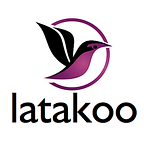Understanding permissions in latakoo
Security and function are behind this feature of content sharing in the cloud
When you log in to latakoo.com, you’ll see a customized feed of content based on your permissions within your organization.
latakoo grants permissions based on two factors: user permissions (for individuals) and network permissions (for content).
What files you can view, delete, share and edit, all depend on the permissions of your role within the network you’re accessing.
Hierarchy of User Permissions
latakoo assigns a division and a role to each user.
The division and role of each user controls how they can access networks or folders of content within organizations.
Divisions
Divisions are work groups, such as television news departments, sales departments or post production project teams within the same organization. These divisions may occasionally share files but need their own system of networks and workflows.
News and sales departments may choose to be classified in different divisions, so that each does not routinely see the content being created by the other division. Video contributors, such as freelancers, are placed in a Guest division, so that they can not view any other content besides their own.
Divisions create virtual “walls” between groups, while still allowing content to be shared.
Roles
User roles further determine permissions.
Roles function to classify users into categories, making the onboarding and reclassification of users easy. Administrators of an organization will work with latakoo to determine what permissions are assigned to each role. When a user is assigned a role, they are immediately granted all of the permissions of that role.
For instance, most organizations agree that freelance contributors are able to view and access only their uploads and no other content. When a user is assigned the role of “freelancer,” she will have limited access to content that resides inside the organization’s networks on latakoo.
Uploaders such as reporters, photographers, and MMJs have access to copy, move, delete and add metadata to their uploaded files, but not others.
Producers may have the ability to copy, move, share and edit metadata for all files.
Media managers and engineers may have the ability to copy, move, delete and add metadata to all files.
Under Manage/Personal Profile you can see find the division and role that’s assigned to you.
Network Permissions
Role-based user permissions and individual network permissions are separate, but they work hand-in-hand. Corporate administrators work with latakoo’s customer success team to decide which network permissions to grant to roles in their hierarchy.
Networks have the following permissions:
Participant: Upload and download files.
Upload Only: Permission to upload but not download.
Download Only: Permission to download but not upload.
Stream Only: Permission to view content but must request the right to download content.
Sharer: Ability to copy, move, share, delete and add metadata to files within this network.
Admin: Ability to delete, copy, move, share and add metadata to any file, plus the power to grant permission to copy and download content. Admins also have the ability to set user divisions and roles, create and deactivate users, as well as create networks.
Flexibility
Because user and network permissions are separate, it gives organizations a lot of flexibility in setting up unique workflows.
For example, roles can be granted special permissions for networks outside their home organizations. One way this is used is for a regional content provider to view content from a variety of affiliated stations, under stream only access. If a user with stream only access sees content that they would like to use, they can request it under the copy/request workflow.
User and network permissions within the latakoo system are key to sharing content and controlling the access of content across affiliated groups and organizations. It makes latakoo much more than a transfer service, but a true end-to-end workflow solution.
Want more information about latakoo? Join our monthly How to latakoo training, or email us.
